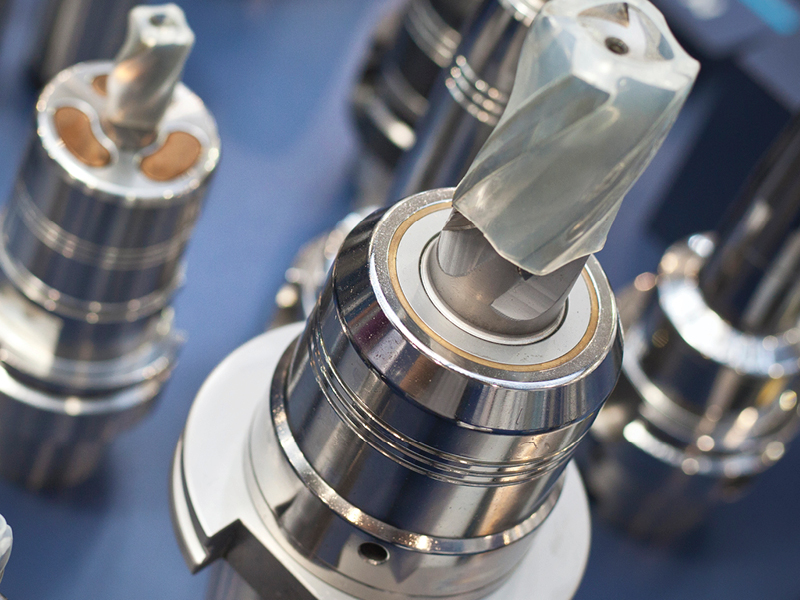MACHINE TOOL COMPONENTS & ACCESSORIES

Ancillary equipment for CNC machine tools such as high-speed spindles, through-tool coolant delivery, chip conveyors, and on-machine tool and measurement probes can improve machining performance and offer more production capabilities.
Narrow by Machine Tool Components & Accessories Product Category
- Ball/Lead Screws & Repair Services
- Bearings, Pulleys, Clutches, Gears & V-Belts
- Chillers
- Chip Conveyors & Handling Equipment
- Coolant Delivery Systems
- Couplings
- Encoders/Resolvers
- Fasteners
- Handwheels, Knobs, Cranks, etc.
- Heat Exchangers & Air Conditioning Equipment
- Hydraulic & Pneumatic Equipment
- Lighting Equipment
- Lights, Indicator & Warning
- Linear Guides
- Linear Scales
- Lubricators
- Machine Castings & Weldments
- Machinery Mountings, Levels, Anchors, Dampers
- Magnets & Magnetic Devices of all Kinds
- Minimum Quantity Lubrication (MQL) Systems
- Nameplates, Labels & Signs
- Non-Servo Electric Motors (Including Spindles, Drive Units & Power Feeds)
- On-Machine Probes
- Pallets, Tote Boxes & Separators
- Protective Enclosures & Covers
- Pumps, Coolant
- Servo Motors, Linear
- Servo Motors, Rotary
- Slides
- Speed Reducers & Gear Boxes
- Spindles
- Springs
- Thermal Sensors
- Tool Turrets
- Toolchangers
- Way Covers, Way Protectors & Seals
FAQ: Machine Tool Components & Accessories
How often should I change coolant?
The accumulation of metal shavings and tramp oil generally requires the coolant to be replaced every week or two, depending on the machine. There are, however, a number of recycling units that can extend the life of useful coolant.
(Source: Doing Away With Coolant Disposal)
When do ballscrews need replacement?
Friction causes heat. Heat causes machine components to grow. This thermal growth causes inaccurate and inconsistent workpieces. Ballscrews, spindle bearings and gearboxes are most likely to undergo thermal growth. Vibration may also occur due to spindles, tools and axis drives that are out of balance. Acceleration/deceleration rates set too fast for a control’s processing speed may also cause vibration. Vibration may be transferred to the cutting zone because of inadequate casting design and misapplication of linear guide or box way systems.
The result of excessive vibration is inaccurate workpieces, poor repeatability and poor surface finish, as well as premature tool and machine wear.
Machine tool manufacturers use various design features to produce stable machine tools that minimize friction and vibration. While some manufacturers use features that compensate for heat and vibration, others address the causes. Addressing the causes of machine tool instability as close to the source as possible seems to be the optimal solution.
Experience with many different systems over the years shows that one solution doesn’t stand out more than the rest. Various workpiece materials and machining operations affect machine tool stability in different ways. In other words, each casting design, spindle design, box way or linear guide system, ballscrew and encoder must be matched to the application.
(Source: For High Speed And High Productivity, Keep Cool And Stay Calm)
How often should machine tool service be performed?
The objective of predictive maintenance (PDM) and similar programs is to predict when a machine tool will fail or go out of tolerance in order to reduce unplanned downtime, particularly at critical times during production. This objective is achieved by monitoring machine tools and collecting data with a combination of instruments, such as calibration, vibration analysis and infrared thermography equipment. A historic comparison of the data is made and used to predict both when a machine tool will require service and the scope of services that will be necessary. Therefore, repairs and other maintenance can be scheduled for time periods which will least interfere with production.
Establishing a PDM program is a long process. It includes many steps, the first of which identifies which machine tools will be in the program. Then technologies required to monitor the machine tools and collect data—such as calibration, vibration or infrared thermography equipment—must be identified and agreed upon. Next, specific equipment has to be evaluated and selected.
After equipment has been purchased, PDM procedures must be established. The basic elements of the PDM program include:
- Monitoring machine tool conditions,
- Diagnostics to identify problems,
- Data analysis and corrective actions, and
- Early warning and prediction by performance and integration of precision measurement systems directly into the manufacturing operation.
After the program procedures have been defined, a criteria must be specified to determine acceptable performance and accuracy. Machine tool baseline conditions have to be identified. Routine machine tool measurements are then taken periodically and data collected. A trend analysis of the data is made. From the analysis, maintenance predictions and scheduling are made. Finally, error correction is performed according to need and schedule.
(Source: Predictive Maintenance And Machine Tool Calibration Techniques)
Get Listed!
Thousands of people visit this Supplier Guide every day to source equipment and materials. Get in front of them with a free company profile.








